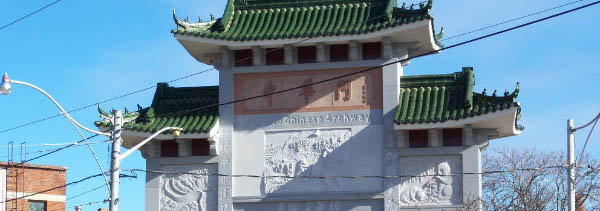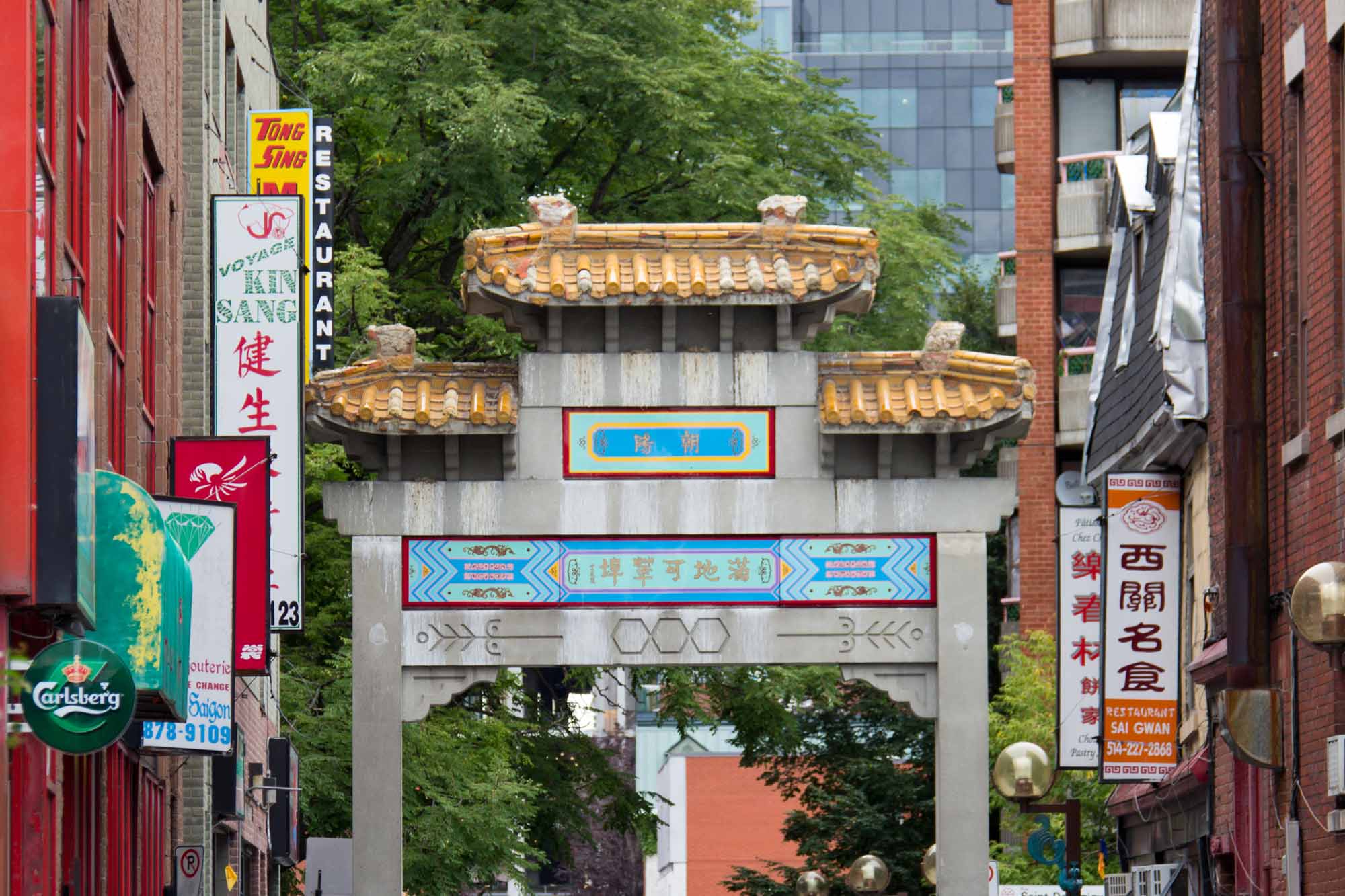Located on the northern edge of downtown Victoria, Victoria’s Chinatown is the oldest Chinatown in Canada. (See also Toronto Chinatown; Vancouver Chinatown; Montreal Chinatown) Chinese merchants from San Francisco founded it during the Fraser River Gold Rush of 1858. Revitalized in the 1980s by the city and its residents, Chinatown is a popular tourist and cultural destination in Victoria. With gentrification and rising rents, Victoria’s Chinatown is now host to a diverse party of businesses and residents. It remains a historically significant space for people of Chinese descent in Canada.

Founding and Settlement
In the mid-19th century, anti-Chinese sentiment began growing in Victoria (see Anti-Asian Racism in Canada). Chinese immigrants banded together to survive the harsh social and labour conditions. In the process, they set the foundations for Victoria’s Chinese community today.
Wealthy Chinese merchants from San Francisco helped found Victoria’s Chinatown. They built simple wooden shacks north of Johnson Street to house Chinese labourers. Chinatown was physically separated from the city centre by the Johnson Street Ravine, which was used for waste disposal. The area was initially only connected to the city by three narrow footbridges. (See Racial Segregation of Asian Canadians.)
History of Victoria’s Chinatown
Early on, Victoria’s Chinatown became the starting point for many Chinese people involved in the gold rush and the building of the Canadian Pacific Railway. A safe sanctuary for new arrivals, it supported newcomers before they moved on to other places to begin new lives. Practically all Chinese people who had immigrated before the 1890s could trace their roots back to Victoria’s Chinatown.
Victoria’s Chinatown was Canada’s largest for 50 years before it was overtaken by Vancouver’s Chinatown in the 1910s. At that time, Victoria’s Chinatown covered six city blocks and housed most of Victoria’s over 3,000 Chinese residents.
It was a fully functioning, self-contained city: it had a hospital, three Chinese schools, two theatres and over 150 other businesses. Influenced by the resident’s homelands, the architectural styles, shops and life within were distinct from the rest of the city. With its 13 opium factories, Victoria’s Chinatown was also a substantial producer of opium in British Columbia. (See Nonmedical Drug Use.)
Did you know?
Production of opium was legal in Canada until 1908. The product was once British Columbia’s third-largest export to the United States.
At the turn of the 20th century, Victoria’s Chinatown was the centre of Chinese life in Canada. There were around three dozen Chinese associations in 1940. These ranged from political organizations to recreational clubs, formalized village and family networks and business associations. Important Chinese political figures such as Sun Yat-sen and Kang Youwei came to Victoria’s Chinatown to seek support and raise funds for their various causes. Sun Yat-sen’s failed Canton uprising against the ruling Qing dynasty was heavily backed by the financial support of Chinese Freemasons in Victoria. Later on, his movement toppled the Qing dynasty and changed the course of Chinese political history.
The Chinese Consolidated Benevolent Association (CCBA) in Victoria, co-founded by Won Cumyow, was the most important Chinese Canadian organization in early Canadian history. The CCBA acted as the official, quasi-governmental representative of all Chinese in Canada from its founding in 1884 until around 1909. The CCBA was a prominent voice of advocacy and organization for people of Chinese descent in Canada until the 1940s. It led provincial and national efforts against racism and discrimination (see also Anti-Asian Racism in Canada; Racial Segregation of Asian Canadians). They were also responsible for the important tradition of returning the remains of all Chinese who had passed away in Canada to their ancestral burial grounds in China until 1930. (See also Funeral Practices in Canada.) Today, while it no longer has the influence it used to enjoy, the CCBA continues to exist and still performs important community and charitable functions.
As Vancouver gradually replaced Victoria as the centre of economic activity in the province, Victoria’s Chinatown declined. It struggled with depopulation and political infighting as residents and businesses moved away from the decaying downtown core. In the 1970s, the future of Chinatown was in doubt by both the city and its residents. Demolition was floated as a possibility.
But beginning in 1979, the City of Victoria, CCBA and other Chinatown associations came together to preserve and revitalize Victoria’s Chinatown. Led by historical geographer David Chuenyan Lai, Victoria’s Chinatown became the first in Canada to undergo a successful revitalization project. Among other important projects, Lai oversaw the development of the Gate of Harmonious Interest ― the first permanent arch of its kind in a Canadian Chinatown.
Victoria’s Chinatown Today
Today’s Chinese communities are far more culturally diverse. They often speak different languages or dialects and come from different regions of China. They are less attached to Victoria’s historic Chinatown compared to the early Chinese settlers, 150 years ago. Facing somewhat less overt discrimination and racism (see also Anti-Asian Racism in Canada; Racial Segregation of Asian Canadians), the Chinese community in Victoria dispersed beyond Chinatown. Many settled in suburban communities in Saanich and Oak Bay.
Designated as a National Historic Site of Canada in 1995, Victoria’s Chinatown is now a tourist hotspot. It is teeming with a vibrant, culturally diverse mix of businesses and residents. Victoria’s Chinatown and its remaining organizations continue to play an important role in Chinese community celebrations and gatherings in the city. Trendy, walkable and now considered part of the downtown core, Chinatown is facing gentrification. Traditional shops and residents are being slowly displaced by social and economic realities.

 Share on Facebook
Share on Facebook Share on X
Share on X Share by Email
Share by Email Share on Google Classroom
Share on Google Classroom







